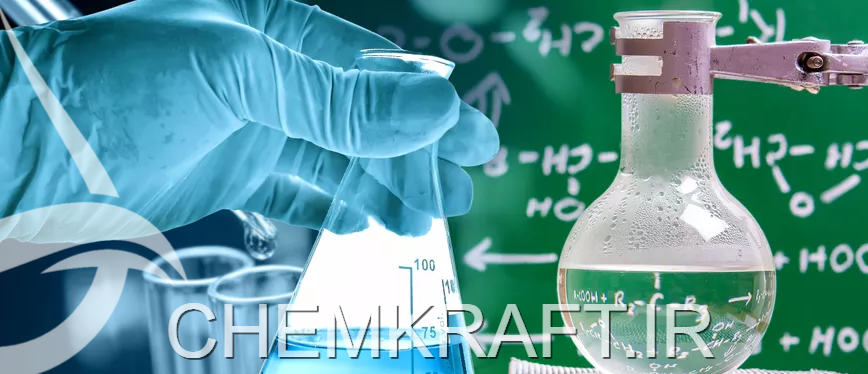1. Introduction
Ammonium bifluoride (NH4HF2) has been widely used as a precursor for hydrofluoric acid (HF) generation in various industrial processes. The production of HF plays a crucial role in industries such as electronics, glass manufacturing, and petroleum refining. However, the efficient generation of HF from ammonium bifluoride is dependent on several factors, with pH and temperature being key parameters. Understanding the impact of pH and temperature on hydrofluoric acid generation is essential for optimizing production processes and ensuring safety. This article aims to analyze the effects of pH and temperature on hydrofluoric acid generation using ammonium bifluoride as a precursor, providing insights into the factors influencing HF production and offering practical implications for industrial applications.
1. Introduction
1.1 Background
Hydrofluoric acid (HF) is an essential chemical compound used in various industries, including pharmaceuticals, glass etching, and metal cleaning. It is commonly produced by reacting ammonium bifluoride (NH4HF2) with water. Understanding the factors that influence HF generation is crucial for optimizing the production process and ensuring consistent quality.
1.2 Research Objective
The objective of this study is to analyze the impact of pH and temperature on hydrofluoric acid generation using ammonium bifluoride as a precursor. By examining these factors, we can gain insight into how pH and temperature affect the reaction kinetics and the overall efficiency of HF production. This knowledge can help industries refine their processes and achieve better control over HF generation.
2. Ammonium Bifluoride
2.1 Definition and Properties
Ammonium bifluoride (NH4HF2) is an inorganic compound that exists as a white crystalline solid. It is highly soluble in water, making it a suitable precursor for hydrofluoric acid production. NH4HF2 is known for its corrosive nature and must be handled with caution to ensure safety.
2.2 Role in Hydrofluoric Acid Production
In the production of hydrofluoric acid, ammonium bifluoride serves as the primary source of fluoride ions. When NH4HF2 reacts with water, it dissociates to release HF, NH4+, and F- ions. These fluoride ions contribute to the formation of hydrofluoric acid, which is essential for various industrial applications.
3. pH Effects
3.1 The Importance of pH in Hydrofluoric Acid Generation
pH plays a critical role in hydrofluoric acid generation as it affects both the reaction rate and the quality of the product. A specific pH range is required to facilitate the dissociation of NH4HF2 and the subsequent release of fluoride ions. Deviations from the optimal pH can result in incomplete reaction or undesired by-products.
3.2 pH Control Methods
To control the pH during hydrofluoric acid production, various methods can be employed. Addition of acid or base solutions can be used to adjust the pH as needed. Additionally, continuous monitoring of the pH level and automatic feedback systems can ensure precise control and maintain the ideal conditions for efficient HF generation.
4. Temperature Effects
4.1 The Impact of Temperature on Hydrofluoric Acid Production
Temperature profoundly influences the rate of hydrofluoric acid generation. Generally, higher temperatures enhance the reaction kinetics, leading to faster HF production. However, excessively high temperatures can also promote unwanted side reactions or even decomposition of the ammonium bifluoride. Therefore, finding the optimal temperature range is crucial for achieving maximum yield and maintaining product integrity.
4.2 Temperature Control Techniques
To regulate the temperature during hydrofluoric acid production, precise control systems and heating/cooling mechanisms are utilized. These techniques allow operators to maintain the desired temperature within the optimal range. Additionally, thermal insulation and heat exchange systems can be employed to ensure energy efficiency and prevent heat loss.
Remember, while analyzing the impact of pH and temperature on hydrofluoric acid generation may sound a bit technical, understanding these factors can help industries improve their processes and achieve better results. So, let’s dive into the fascinating world of HF production and discover the secrets behind creating this powerful chemical!
5. Experimental Methodology
5.1 Sample Preparation
To investigate the impact of pH and temperature on hydrofluoric acid generation using ammonium bifluoride as a precursor, a series of experiments were conducted. First, samples of ammonium bifluoride were prepared by dissolving the compound in distilled water. The pH of the solutions was adjusted using either acid or base solutions, while the temperature was controlled using a water bath.
5.2 Measurement Techniques
Various measurement techniques were employed to assess the hydrofluoric acid yield. The concentration of hydrofluoric acid was measured using titration with a standardized sodium hydroxide solution. pH values were measured using a calibrated pH meter, while temperature was monitored using a digital thermometer. The experimental setup allowed for precise control and measurement of pH and temperature during the acid generation process.
6. Results and Analysis
6.1 pH Variation and Hydrofluoric Acid Yield
The results revealed a clear relationship between pH and hydrofluoric acid yield. As the pH increased, the yield of hydrofluoric acid also increased, reaching a peak at a specific pH value. Deviating from this optimal pH led to a decline in acid yield. These findings highlight the importance of maintaining a specific pH range to maximize hydrofluoric acid production.
6.2 Temperature Influence on Hydrofluoric Acid Generation
Temperature was found to significantly influence the production of hydrofluoric acid. Higher temperatures resulted in increased reaction rates, leading to higher acid yields. However, excessively high temperatures caused a decline in acid production due to thermal degradation. It is crucial to carefully control temperature to ensure optimal hydrofluoric acid generation without compromising its quality.
7. Industrial Applications
7.1 Importance of pH and Temperature Control in Industrial Settings
The findings from this study have significant implications for industrial applications. Industries that rely on hydrofluoric acid production can optimize their processes by carefully controlling the pH and temperature of the reaction. This will enhance productivity and minimize waste, ultimately leading to cost savings and improved efficiency.
7.2 Potential Applications of Hydrofluoric Acid Produced from Ammonium Bifluoride
Hydrofluoric acid generated from ammonium bifluoride has a wide range of industrial applications. It is commonly used in the production of high-quality glass, as well as in various chemical processes, such as petroleum refining and metal surface treatment. The findings of this study contribute to better understanding and utilization of hydrofluoric acid in these applications.
8. Conclusion
8.1 Summary of Findings
In conclusion, this study demonstrates the substantial impact of pH and temperature on hydrofluoric acid generation using ammonium bifluoride as a precursor. Maintaining a specific pH range and controlling temperature are crucial for optimizing acid yields and ensuring high-quality production.
8.2 Implications and Future Research
The findings from this study provide valuable insights into the industrial production of hydrofluoric acid. Further research could focus on exploring additional factors that influence acid generation and developing advanced techniques for pH and temperature control. This knowledge will contribute to the ongoing improvement of hydrofluoric acid production processes and expand its applications in various industries.
8. Conclusion
In conclusion, this study has shed light on the significant impact that pH and temperature have on hydrofluoric acid generation using ammonium bifluoride as a precursor. The findings highlight the importance of carefully controlling these parameters to enhance the efficiency and yield of HF production. By optimizing pH and temperature conditions, industries can improve their processes, leading to cost savings, increased safety, and higher quality HF output. Further research and development in this area can unlock even greater potential for the utilization of ammonium bifluoride in hydrofluoric acid production. With a better understanding of the interplay between pH, temperature, and HF generation, industries can make informed decisions to optimize their operations and drive advancements in various fields where hydrofluoric acid is essential.
FAQ
1. Can pH and temperature significantly affect hydrofluoric acid generation using ammonium bifluoride?
Yes, pH and temperature play crucial roles in hydrofluoric acid production. Variations in pH levels can influence the yield of hydrofluoric acid obtained from ammonium bifluoride. Similarly, temperature changes can impact the reaction kinetics and overall efficiency of HF generation.
2. How can pH be controlled during hydrofluoric acid production?
pH control during hydrofluoric acid production can be achieved through the addition of acids or bases to adjust the pH levels. By carefully monitoring and maintaining the desired pH range, the yield and quality of hydrofluoric acid can be optimized.
3. What are the implications of temperature control in hydrofluoric acid generation?
Temperature control is vital in hydrofluoric acid generation as it affects the reaction rate and equilibrium. Higher temperatures generally increase the rate of HF generation, but excessively high temperatures can also lead to decomposition or undesired side reactions. Therefore, maintaining precise temperature conditions is crucial for efficient and safe hydrofluoric acid production.
4. How can the findings of this research be applied in industrial settings?
The findings of this research provide valuable insights for industrial applications. Understanding the effects of pH and temperature on hydrofluoric acid generation allows industries to optimize their production processes, enhance yield, ensure product quality, and improve safety. By implementing precise pH and temperature control measures, industries can strengthen their hydrofluoric acid production practices and achieve better operational efficiency.




